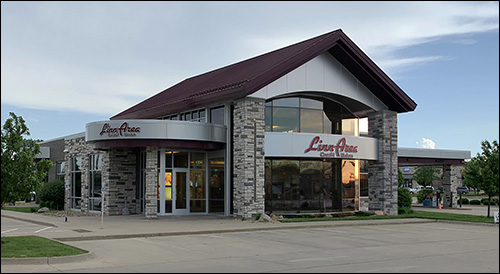An Iowa-based credit union has developed a “connected” branch network employing full virtualization, while building modern technology including ID card image capture into its daily operations
Sections in this Case Study: 1. Networking – Virtualizing the Branch | 2. ID Card Image Capture |
3. Network Integration: Overcoming Technical Challenges
 Linn Area Credit Union has taken advantage of modern branch technology to streamline its workflows and processes, as well as provide a top-shelf customer experience. By incorporating the latest in branch virtualization, as well as important auxiliary functions such as ID card capture, the Cedar Rapids, Iowa-based institution has managed to:
Linn Area Credit Union has taken advantage of modern branch technology to streamline its workflows and processes, as well as provide a top-shelf customer experience. By incorporating the latest in branch virtualization, as well as important auxiliary functions such as ID card capture, the Cedar Rapids, Iowa-based institution has managed to:
- Decrease the number of hardware peripherals at the member service pods, while solving compatibility issues.
- Improve transaction workflow and efficiency.
- Lower the overall cost of ownership for member services pods and teller workstations.
In 2019, Digital Check began supplying teller check scanners that also offered the capability to scan an ID card on the same equipment – in the same teller session. This was one part of a major branch overhaul and core system change.
With the credit union’s overall objectives in mind, the IT department endeavored to create a “connected” branch environment that was more practical for the Member, as well as easier for the Member Services team to operate. The result was a branch experience that was smooth for the member and for the services team – allowing them both to focus on the financial aspects of the visit, and not the technical aspects of how it is accomplished.
This Profile Showcase covers three aspects of Linn Area CU’s transformation. All three are equally important, and have been separated into individual focus segments, to give each topic its due without diluting the rest.
In order, those segments are:
 1. Networking and Virtual Teller Workstations – For smaller and mid-sized institutions, switching from standalone PCs to a virtual environment often presents a daunting challenge. As an early adopter of this technology, Linn Area has shown that modern branch networking is within the reach of any financial institution, large or small. Rich Head, the credit union’s vice president of information technology, outlines the scope of a virtualization project, and shares key considerations for those thinking about beginning such an undertaking.
1. Networking and Virtual Teller Workstations – For smaller and mid-sized institutions, switching from standalone PCs to a virtual environment often presents a daunting challenge. As an early adopter of this technology, Linn Area has shown that modern branch networking is within the reach of any financial institution, large or small. Rich Head, the credit union’s vice president of information technology, outlines the scope of a virtualization project, and shares key considerations for those thinking about beginning such an undertaking.
2. ID Card Image Capture – Linn Area Credit Union captures full scanned images of checks and Members’ driver’s licenses and ID cards. This is accomplished within the same Teller session and workflow. There is no longer a need for separate pieces of hardware and software for each. Also, there is no longer a need to utilize magnetic stripe readers that have become known for their security vulnerabilities. We take a look at the use cases for capturing ID images and data at the new Member Pod Stations.
3. Network Integration and Project Management – Even the best-planned rollouts are never completely plug-and-play. Linn Area introduced a new teller platform and new hardware at the same time, including a switch to network-ready peripherals. We examine how they managed to transform their branch network and iron out the wrinkles with several types of hardware in a virtual environment.





